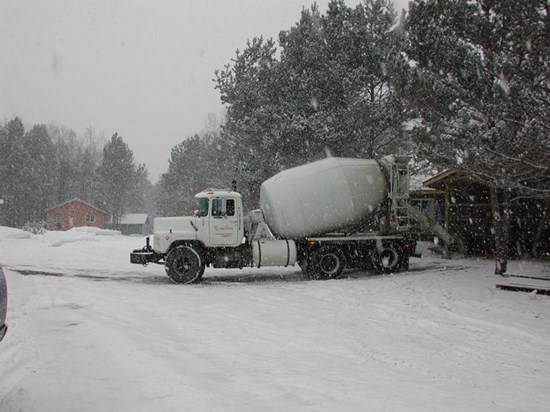What is Cold Weather?
Cold weather is defined as a period when the average daily temperature falls below 4°C for more than three successive days. These conditions requires particular provisions to protect concrete from the damage that might be caused by the cold weather on both the setting time and concrete placing, finishing and protection systems that must be followed for proper concrete placement.
Grasp of the different factors that influence concrete properties is required for successful cold-weather concreting. Fresh concrete (in plastic state) will freeze when the ambient temperature falls below about -4°C. If it happens and plastic concrete freezes, its targeted mechanical strength could be decreased by more than 50% and of course, its durability will be negatively affected. Thus, concrete has to be protected from freezing until it reaches a compressive strength of more than 3.5 MPa. Moreover, if concrete would be subjected to cycles of freezing and thawing, it has to be protected until it attains a compressive strength of at least 24.0 MPa.
Following are the general procedures for cold weather concreting as given by RMCAO (Ready Mixed Concrete Association of Ontario), keeping in mind that one of the important precautions that should be taken is to adequately insulate the newly placed concrete to retain the heat of hydration and thereby maintain favorable curing temperatures and the insulation measures should be gradually removed to avoid thermal shock and subsequent cracking.
■ Removing all ice and snow from the subgrade or formwork.
■ Supplying the necessary supplemental heat required to ensure that forms, subgrades, and reinforcing steel is maintained a minimum temperature of 5°C well prior to the concrete placement.
■ Ordering concrete with a temperature between 10°C – 25°C.
■ Concrete should be ordered using the lowest practical water slump since this will reduce bleeding and setting times. Chemical admixture can still be used to improve the workability
of the concrete.
■ Chemical admixtures and mix design modifications can be used to offset the slower setting times and strength gain of concrete during cold weather conditions. Considerations should be given to ordering concrete that will obtain higher early strengths.
■ Concrete temperature must be maintained at a minimum of 10°C for the full curing period.
■ The surface of the concrete should not be allowed to dry out while it is still plastic since this may cause plastic shrinkage cracking. The longer set times encountered during cold weather combined with the effects of hot dry air from heaters being blown along the top surface of the concrete significantly increase this risk.
■ Wet curing methods are typically not recommended during cold weather conditions since the concrete will not have a sufficient time period to air dry before the first freeze/thaw cycle.
■ The possibility of thermal cracking must be considered when the heating supplied during the curing period is going to be suspended. Concrete should not be allowed to cool at a rate outside the limits listed in the relevant specifications.
